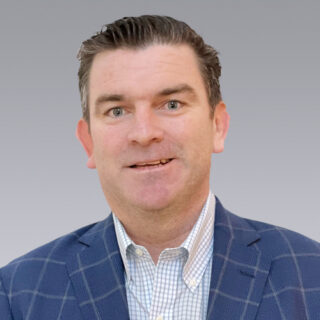Many developers and owners of ambulatory surgical centers (ASC) and medical office buildings (MOB) are physicians or health care operators with entrepreneurial natures. As their practices grow, plans to take control of their schedules, staff, equipment, income and real estate are exhilarating. To do this, they may purchase land and develop an ASC, MOB, urgent care facility or other type of health care building.
But costs related to operating medical practices continue to increase. With new IT and equipment expenses (particularly related to electronic medical record requirements) as well as rising employee salaries and insurance premiums, many ASC and MOB operators have learned that the reality of managing property in addition to a medical practice presents challenges they were not expecting.
But many have also discovered that there is a way to infuse their businesses with cash and continue operating the practices that provide the flexibility, efficiency and income they sought to control. In fact, there is often more value in their real estate than they initially realized. The key lies in selling the building and leasing it back, or a “sale-leaseback.”
UNDERSTANDING THE SALE-LEASEBACK
Here’s an example: If a doctor borrowed $1.5 million 10 years ago to develop a $2.5 million medical facility and is now operating an established and successful medical practice, the loan for the building has probably been reduced by half while the business has been paying market lease rates.
The value of the real estate is tied to the lease payments. Assuming the rent is at market rates, and it increases with market “bumps” (usually 2%–3% a year), the real estate might be sold for $4 million or more today. A broker who specializes in the sale of medical properties can provide the doctor with advice about the structure of the sale and the lease terms that will provide the most benefits to the seller. Often, a new lease negotiated between the buyer and seller will take effect at the same time the property closes. The doctor can pay off the debt on the real estate and invest the profits.
Many sellers of medical real estate have used such profits to buy new equipment, hire additional personnel, strengthen operational and financial performance, and invest in more flexible and high-yielding investments.
KNOW WHAT MAKES A PROPERTY ATTRACTIVE TO INVESTORS
This example describes an attractive opportunity. But it’s important to keep in mind the many factors that may be involved. For example, most medical property investors prefer long-term leases that are triple-net agreements at competitive market rental rates. The most attractive conditions include fully-leased, well-located Class A and Class B facilities that are less than 10 years old with initial 10-year leases (or longer).
Profitable tenants with strong financials attract the best offers. Otherwise, if a tenant provides personal guarantees and the right to review financial statements occasionally, the financial risks appear smaller to the buyer, typically resulting in multiple competitive offers.
Another factor is when a lead doctor in a surgery center approaches retirement age, which can cause the stability of the surgery center to be viewed as a risky investment. Prospective buyers place much value in knowing productive physicians will be working for the full term of the lease. Therefore, selling well in advance of the lead doctor’s retirement will likely provide the best results.
EVALUATE THE MARKET TRENDS
The last few years have seen a growing market for medical properties. As investors and lenders began to understand the stability and financial strength of these tenants, they also witnessed the tremendous growth of the health care industry in general.
There is plenty of competition for high-quality properties with growth potential. In fact, today there are many more health care property investors than there are medical buildings for sale. Although that sounds like a sellers’ market, there are several current trends that may affect values. Interest rates are expected to increase two or three times this year, affecting the return on the buyer’s investment. Also, there are questions about reimbursements and continued pressure on facility fees by payers. Particularly if the owner is nearing retirement age or thinking about investment portfolio changes, there are strong reasons to sell ASCs and MOBs sooner rather than later.
As with all complex decisions, those looking to sell an ASC or MOB can benefit from the advice and guidance of an experienced broker who specializes in medical properties. Find a well-established medical specialist who knows the nuances of your market, and you will be in good hands to navigate a promising opportunity.
Beth (CCIM, LEED AP) is a healthcare real estate advisor to health systems with a specialty in the sale of investment properties including hospitals, surgery centers and medical office buildings. She was a former pilot, professional pianist, and dance instructor who co-owned a 25-thousand-acre ranch in Wyoming before flipping Texas real estate to fund her early brokerage career.

 Beth Young
Beth Young
 Shawn Janus
Shawn Janus
 Stephen Woelfel
Stephen Woelfel